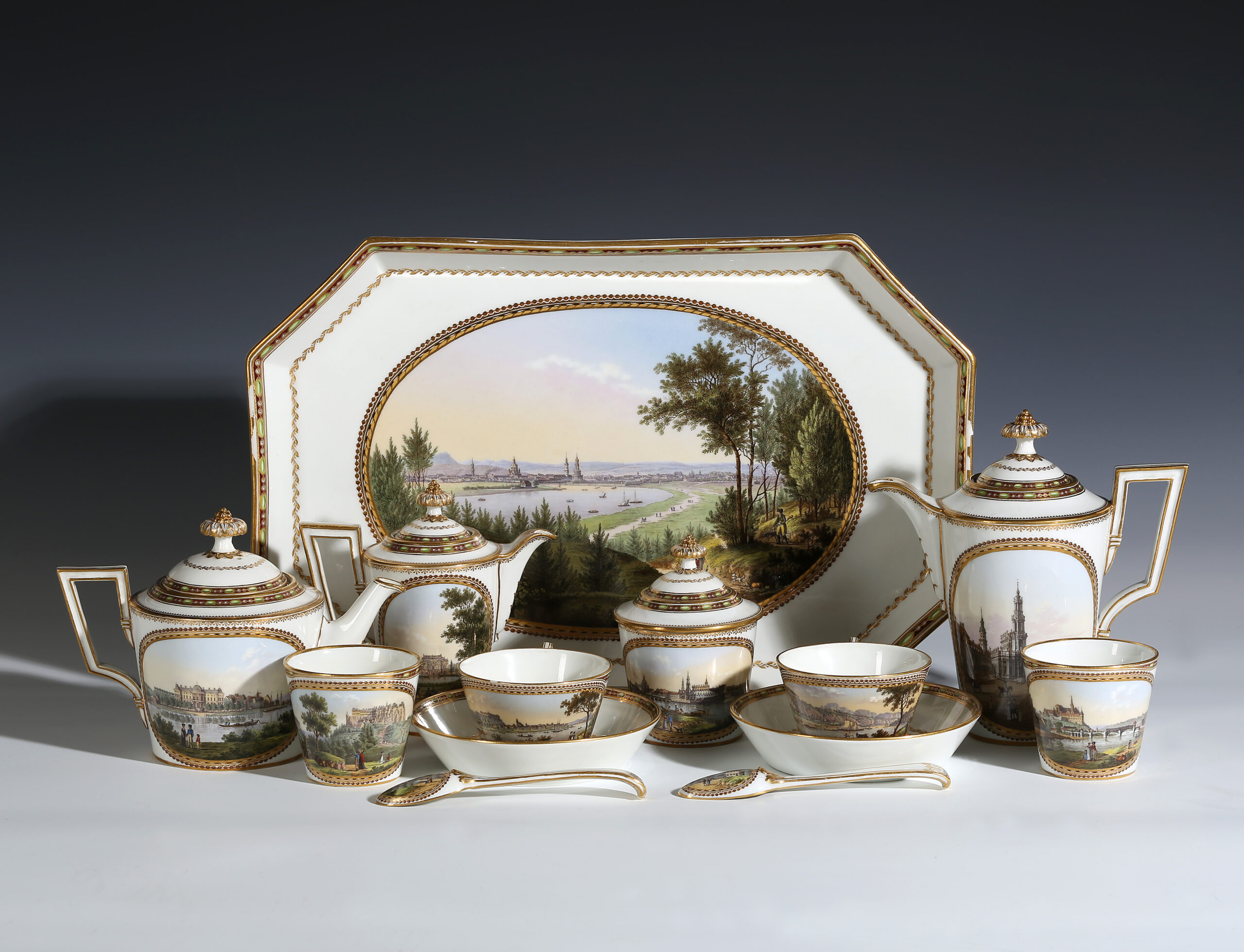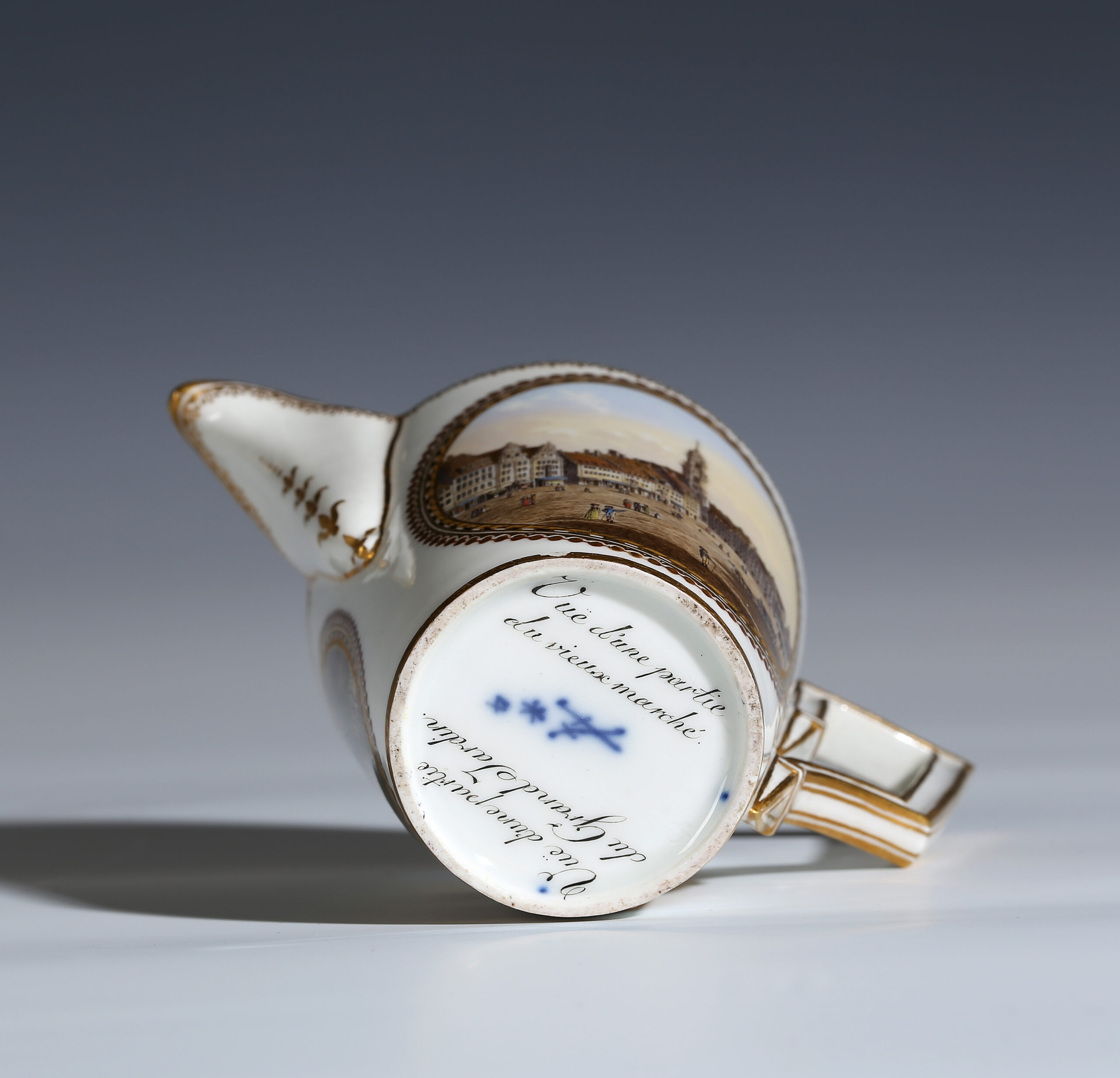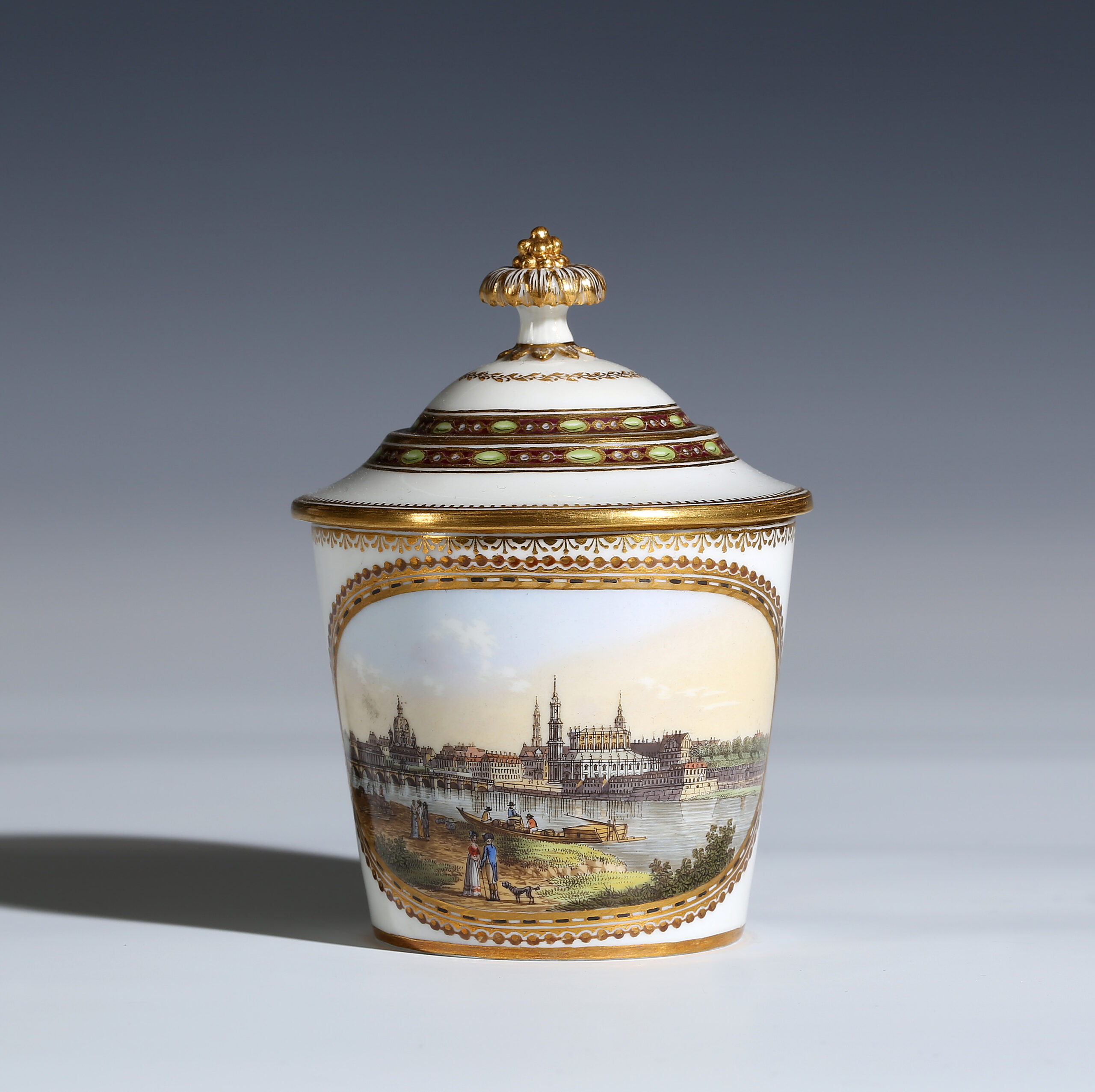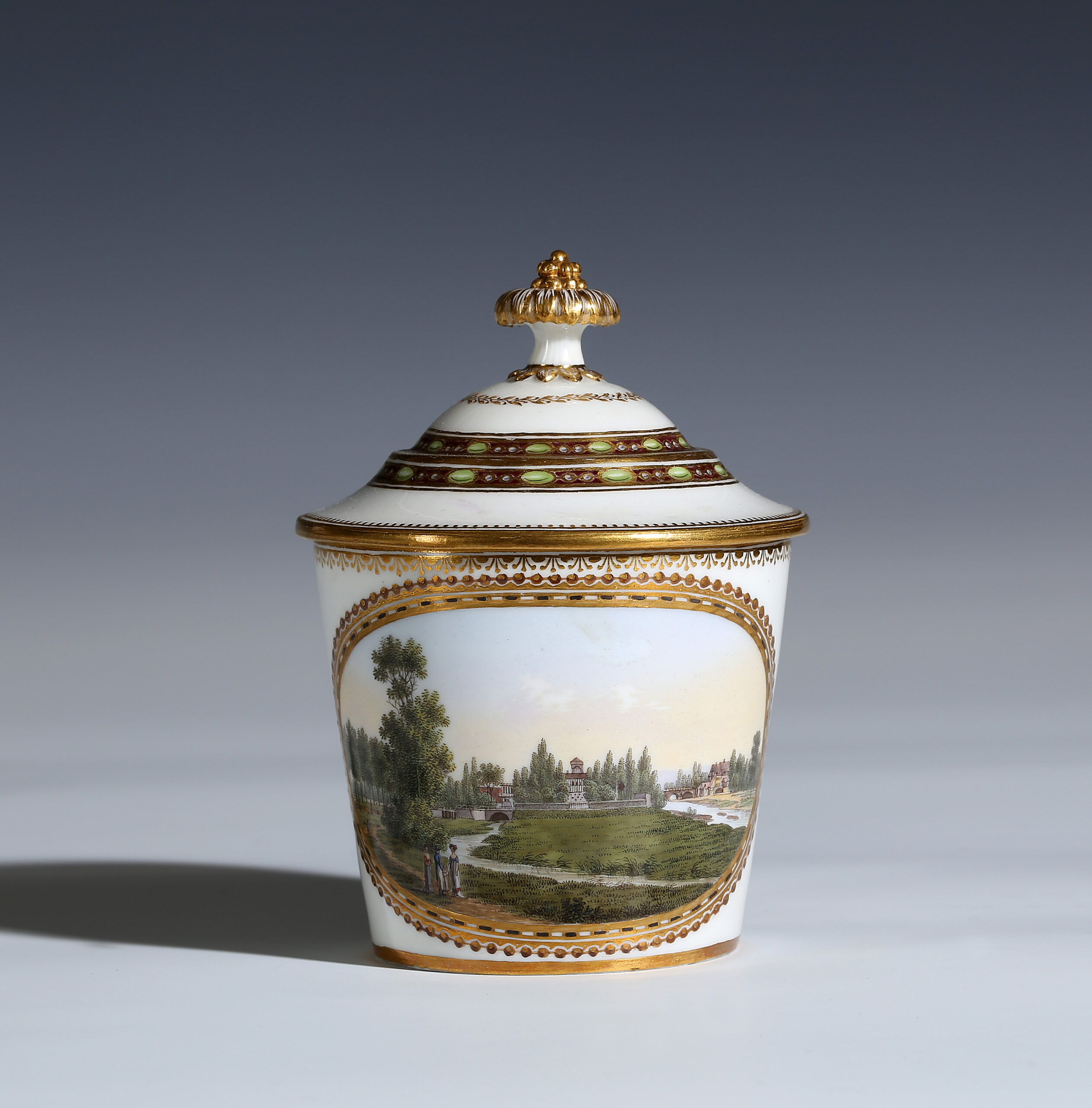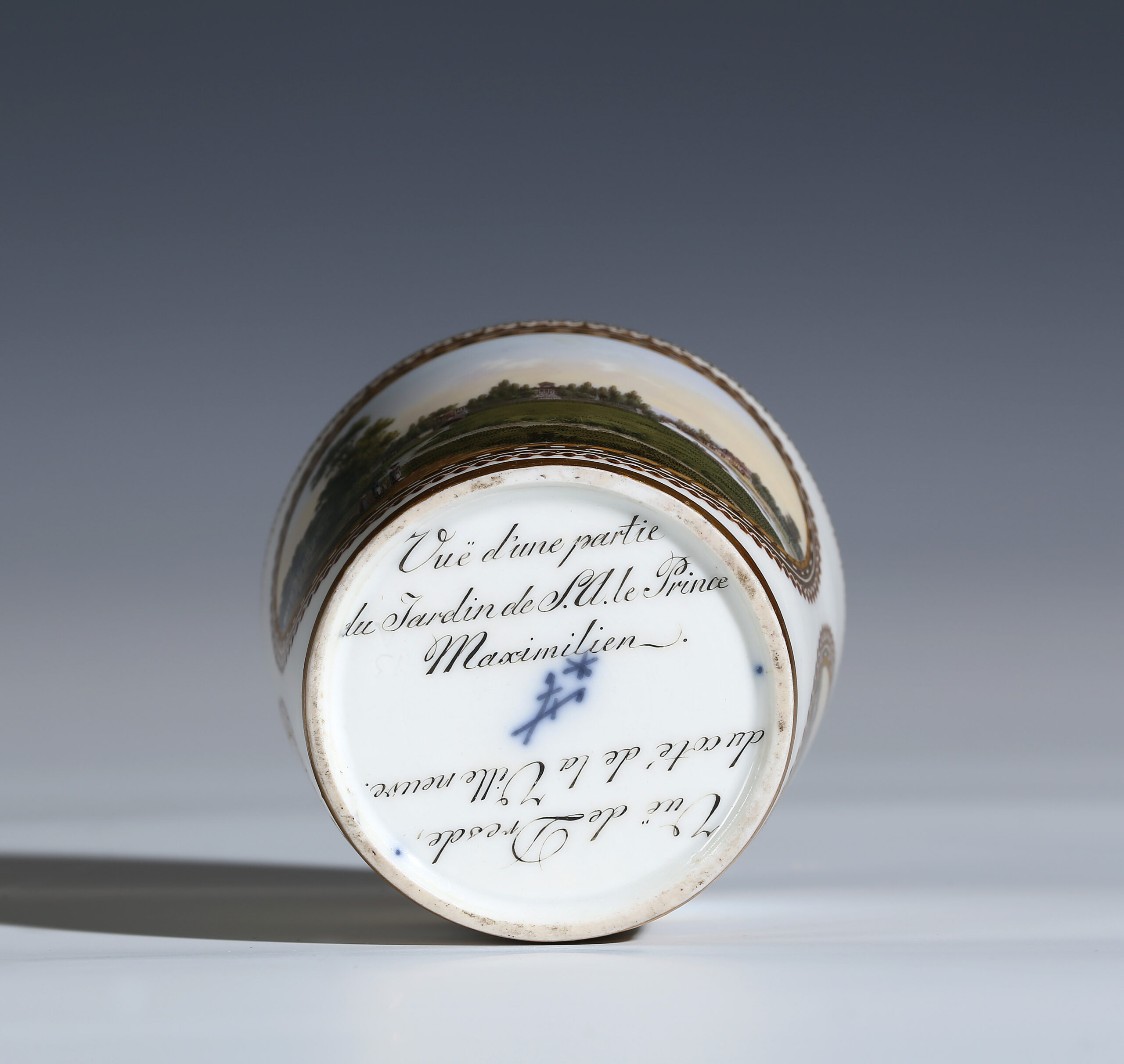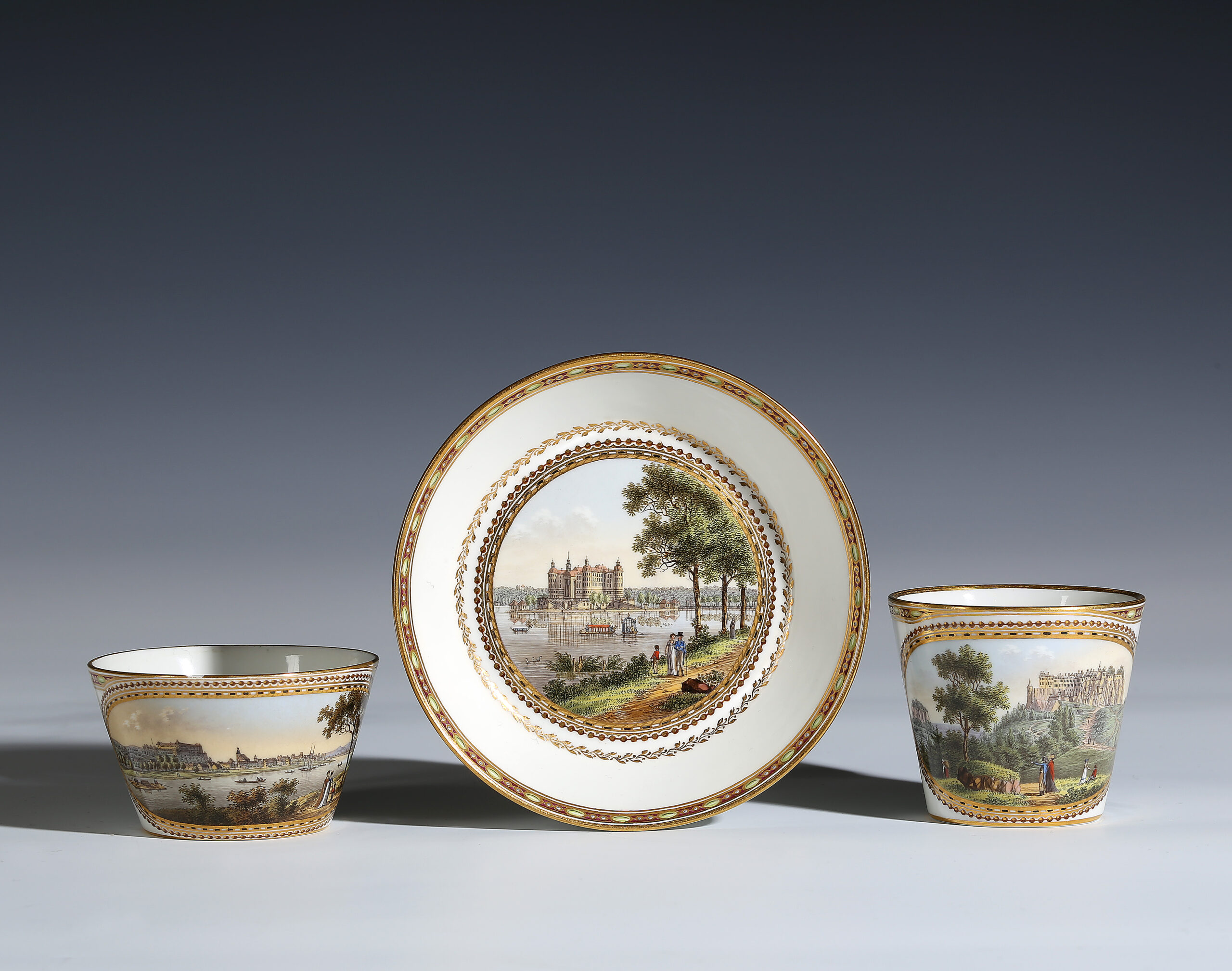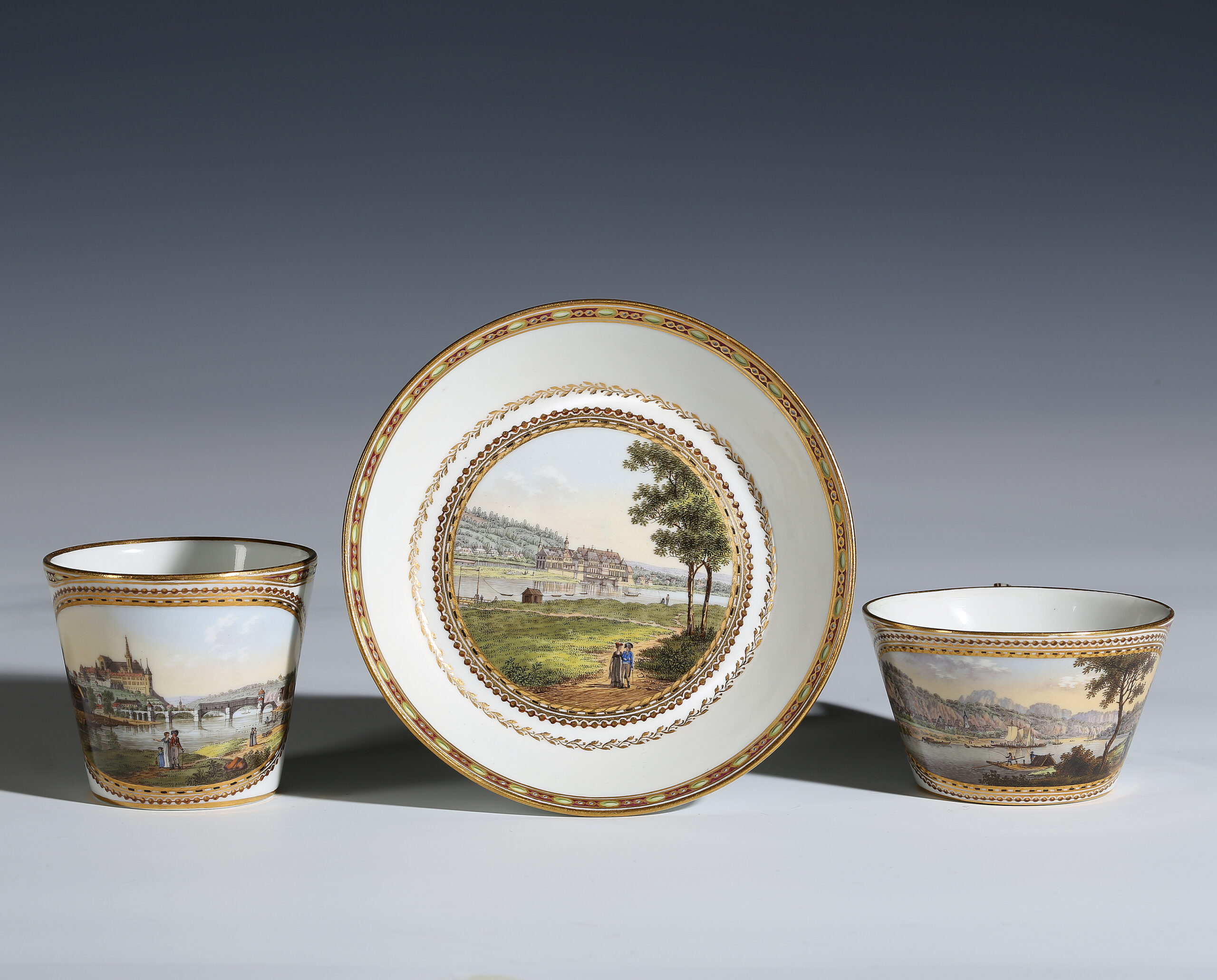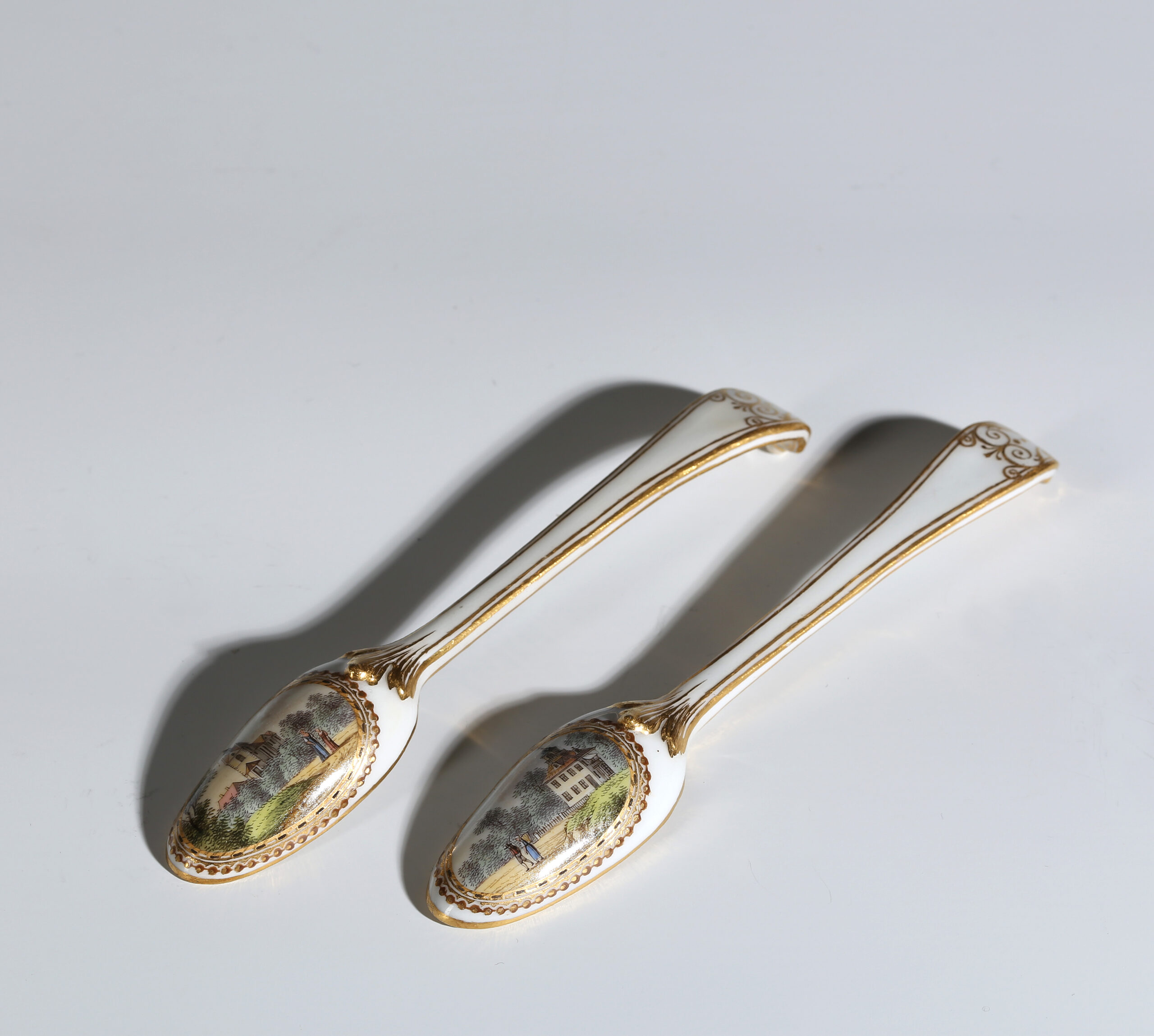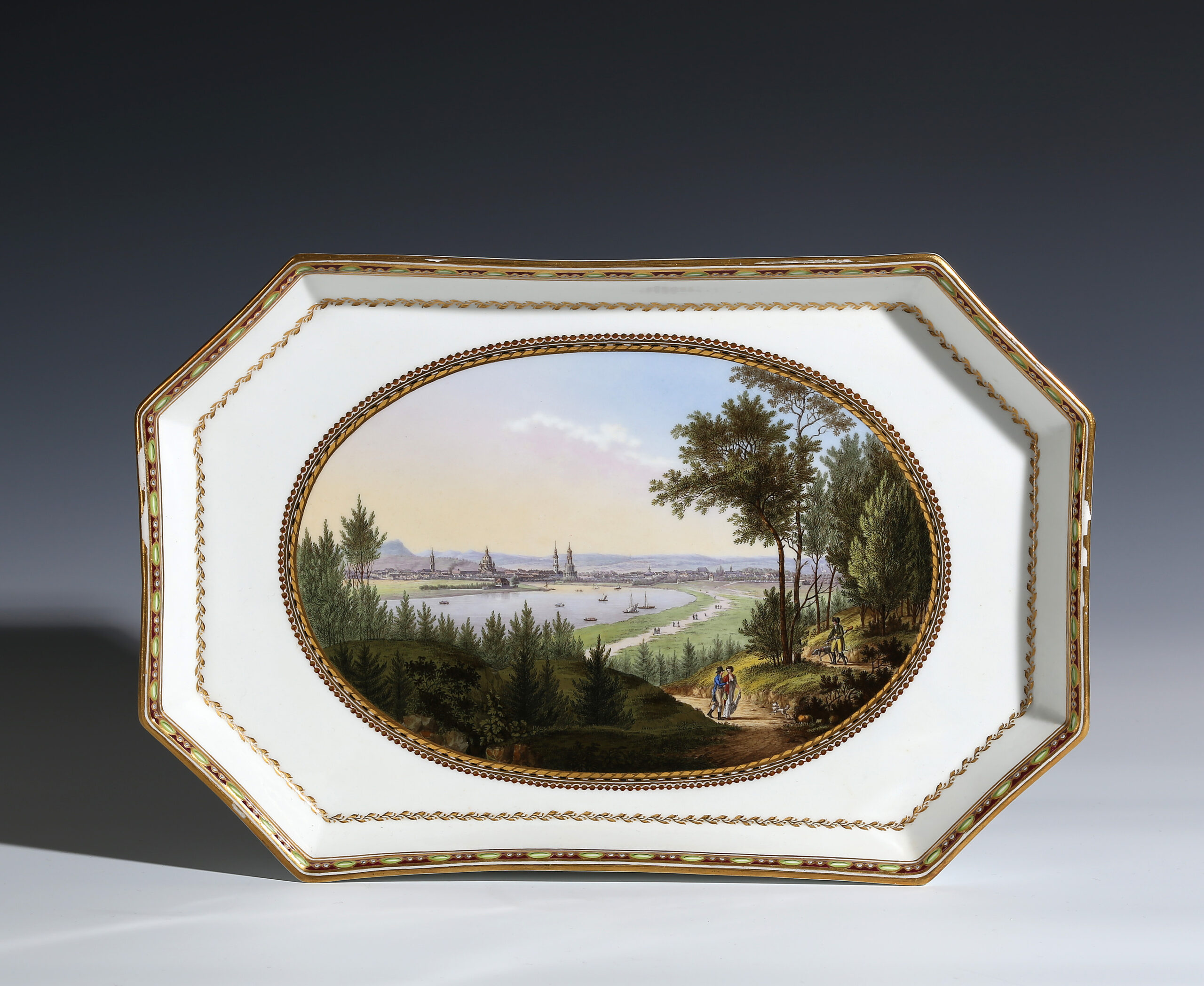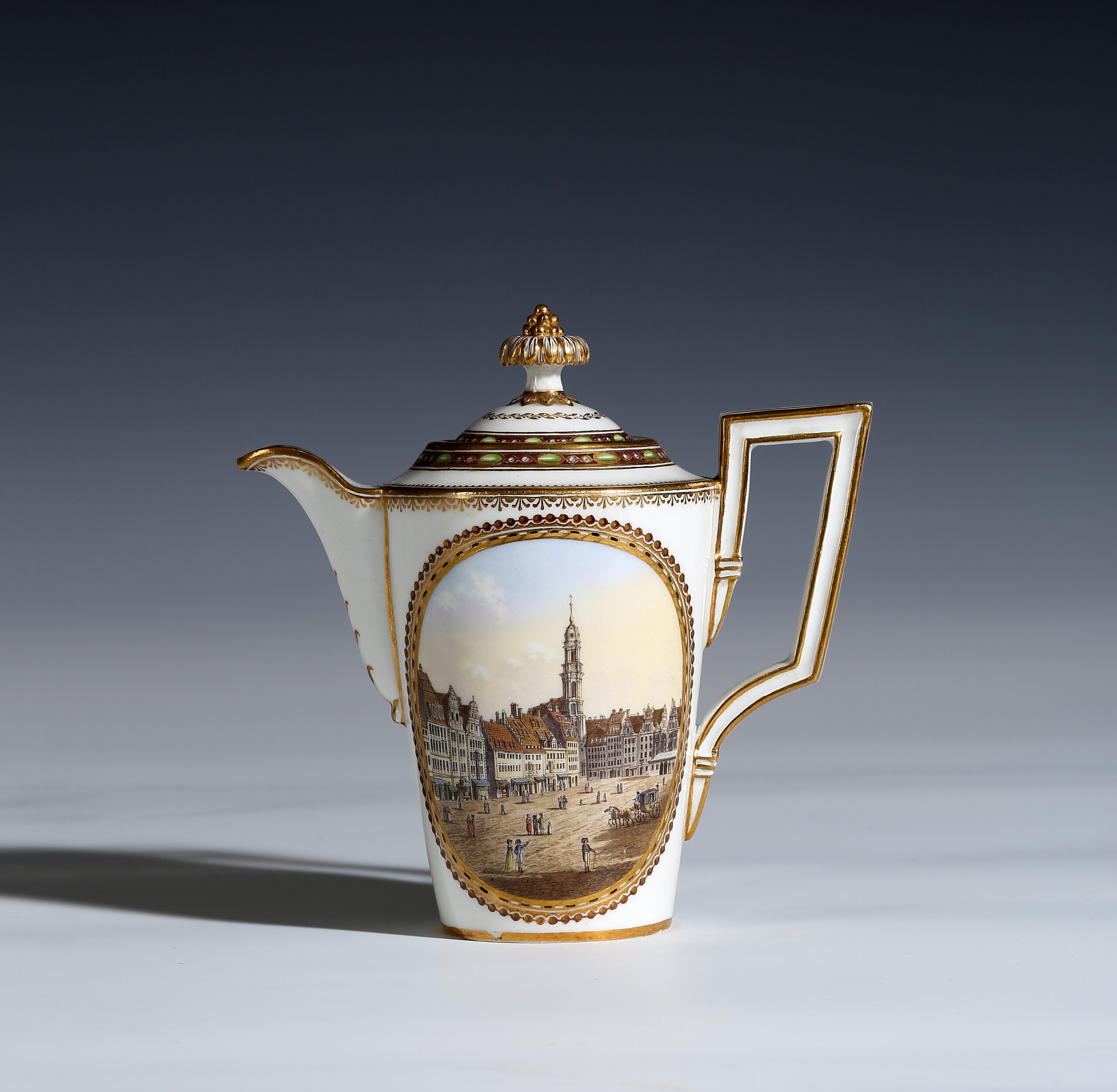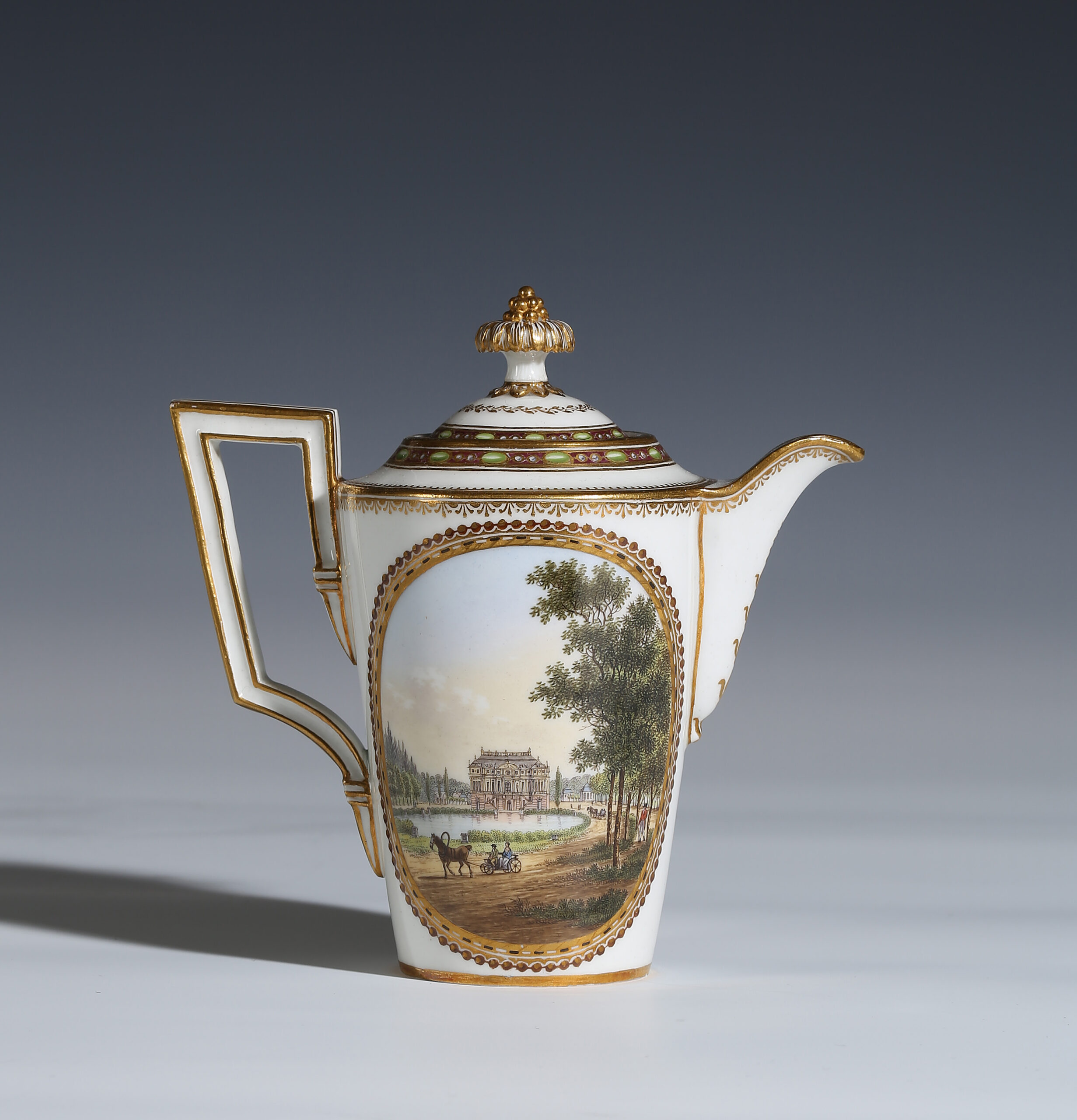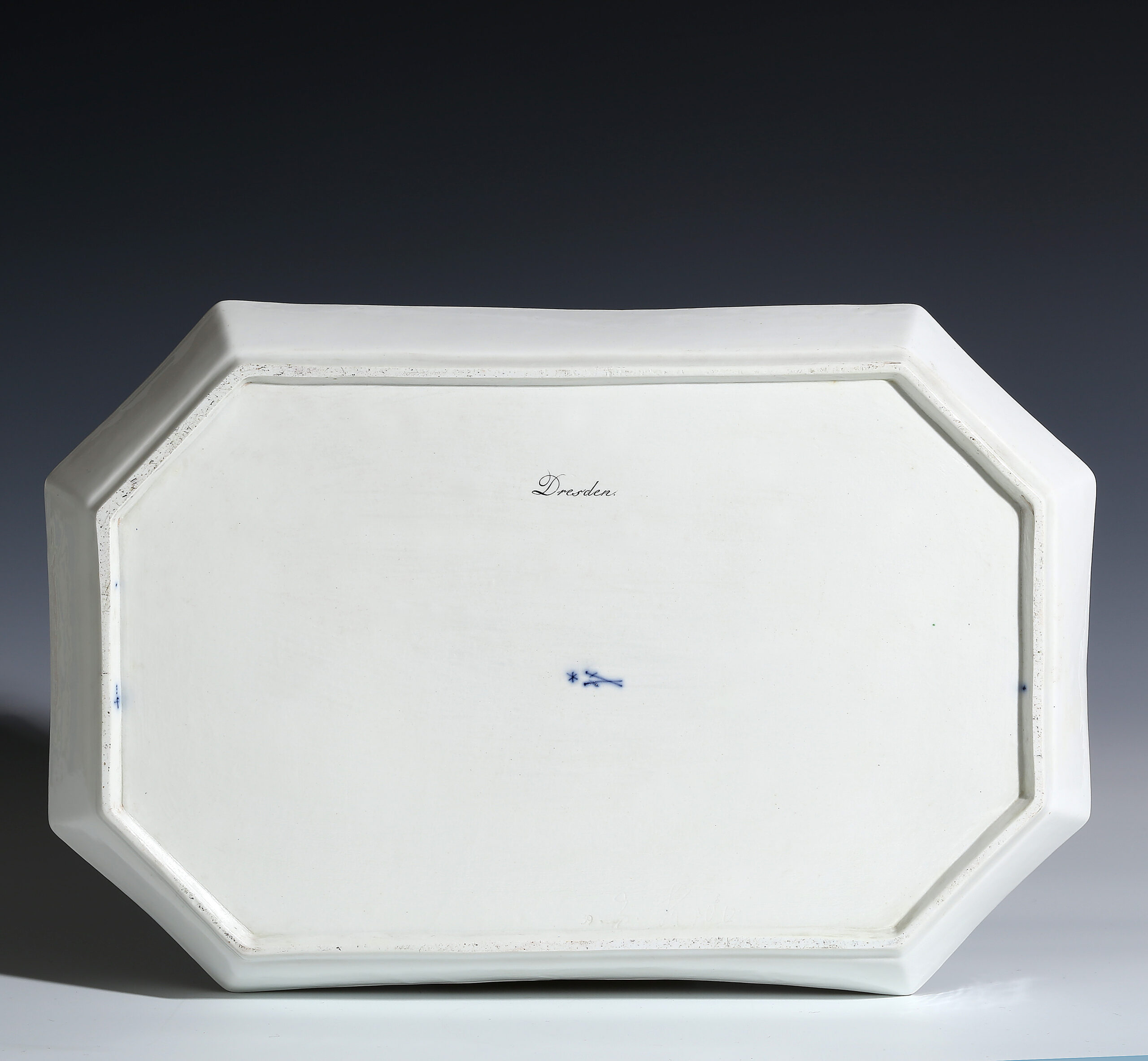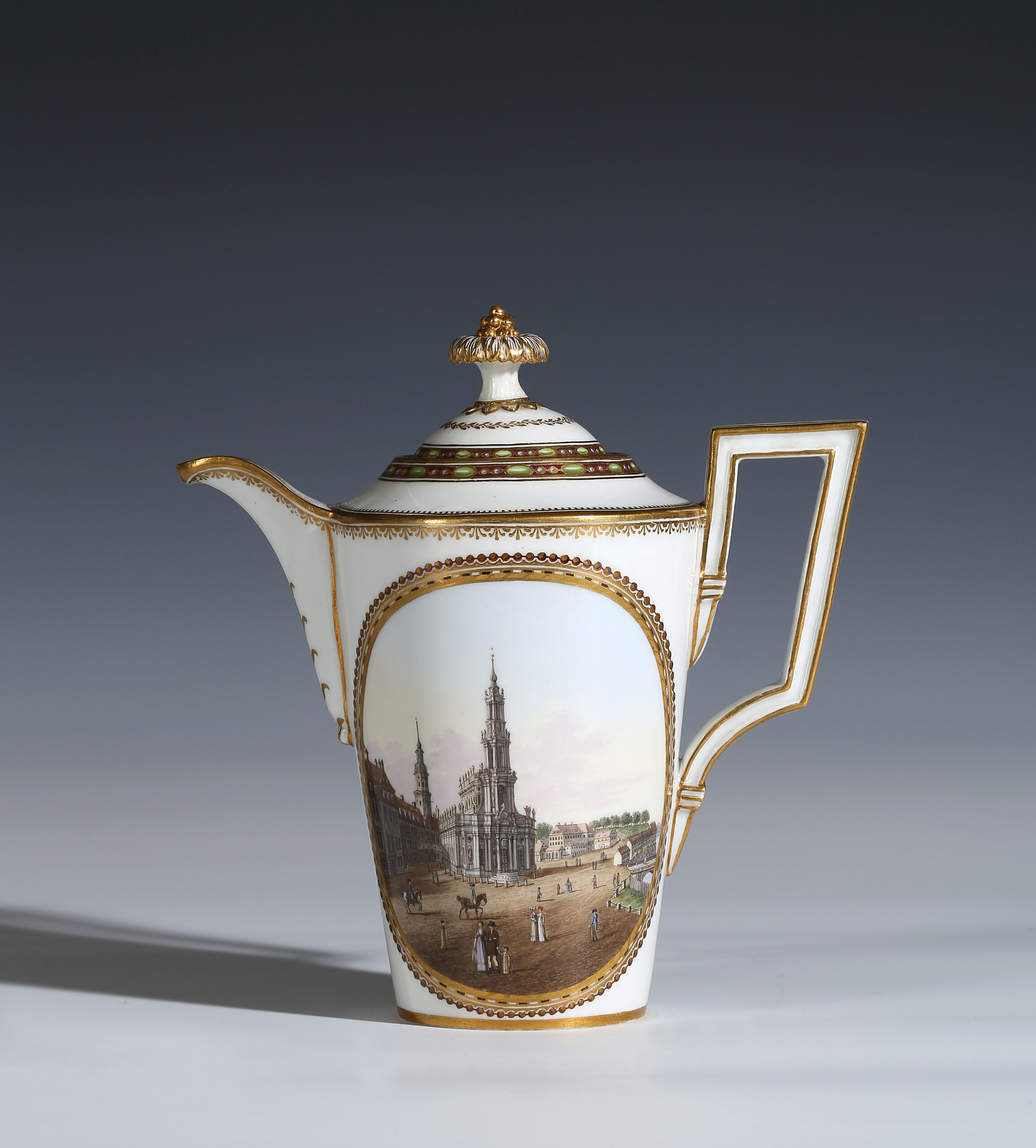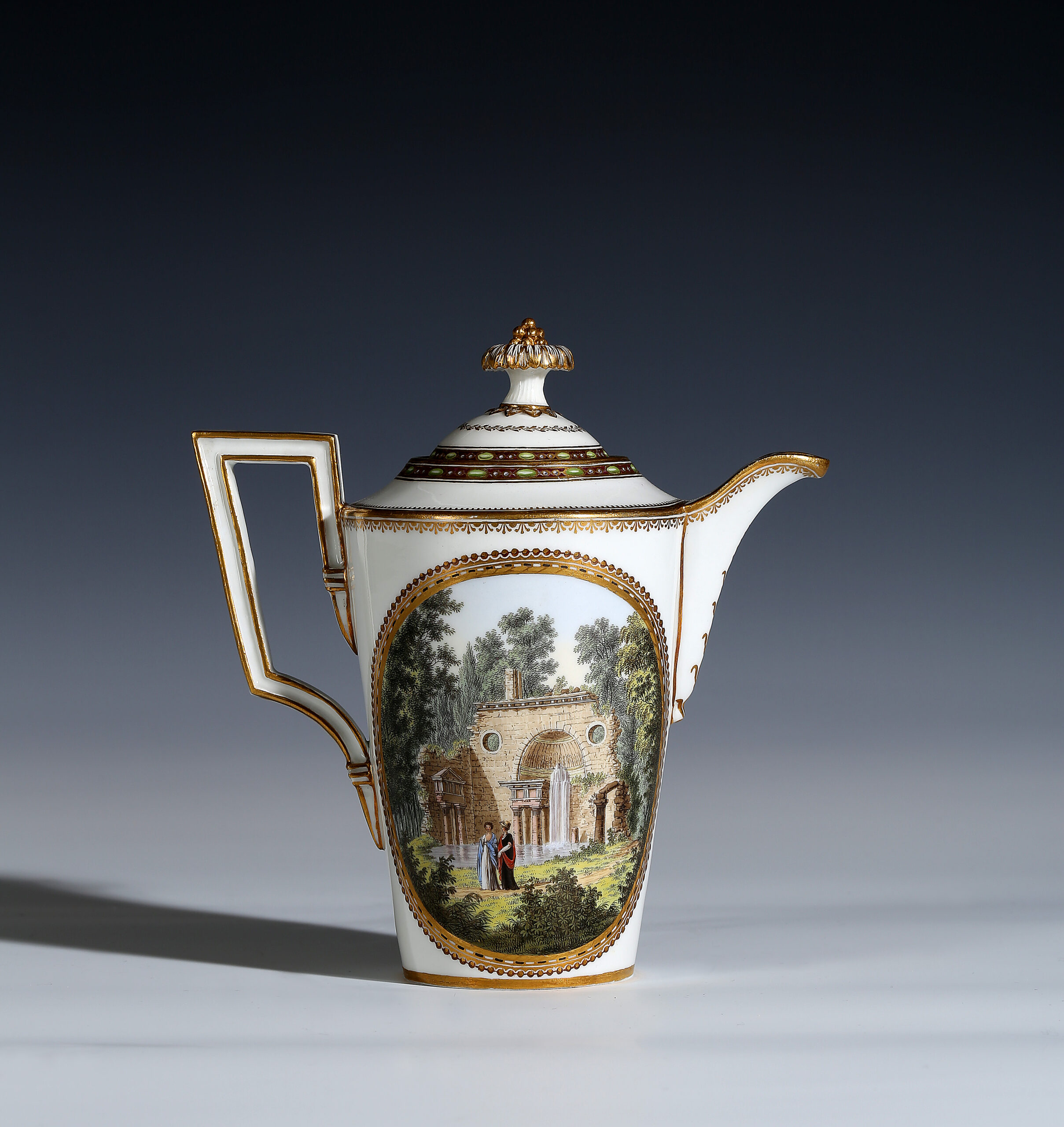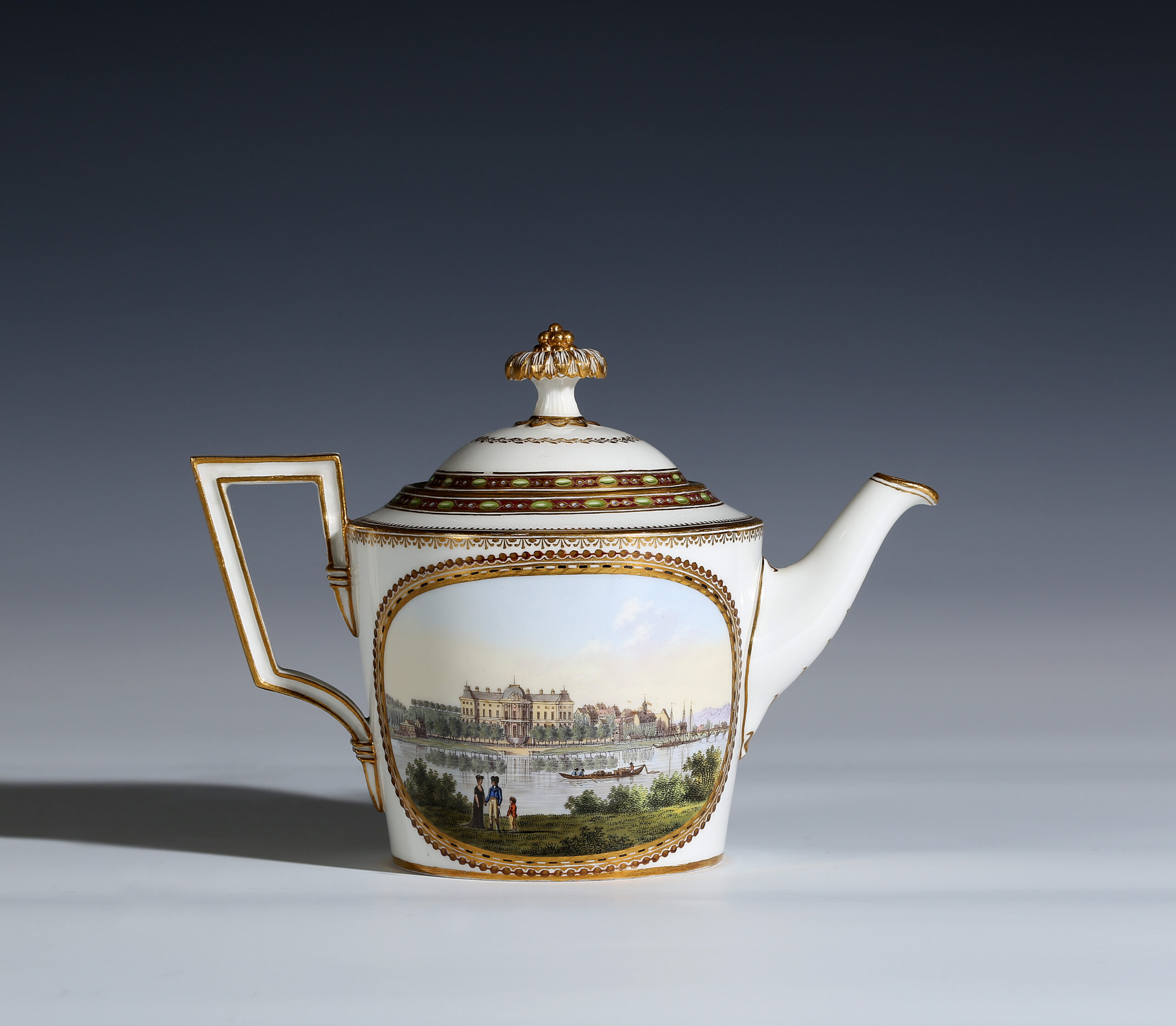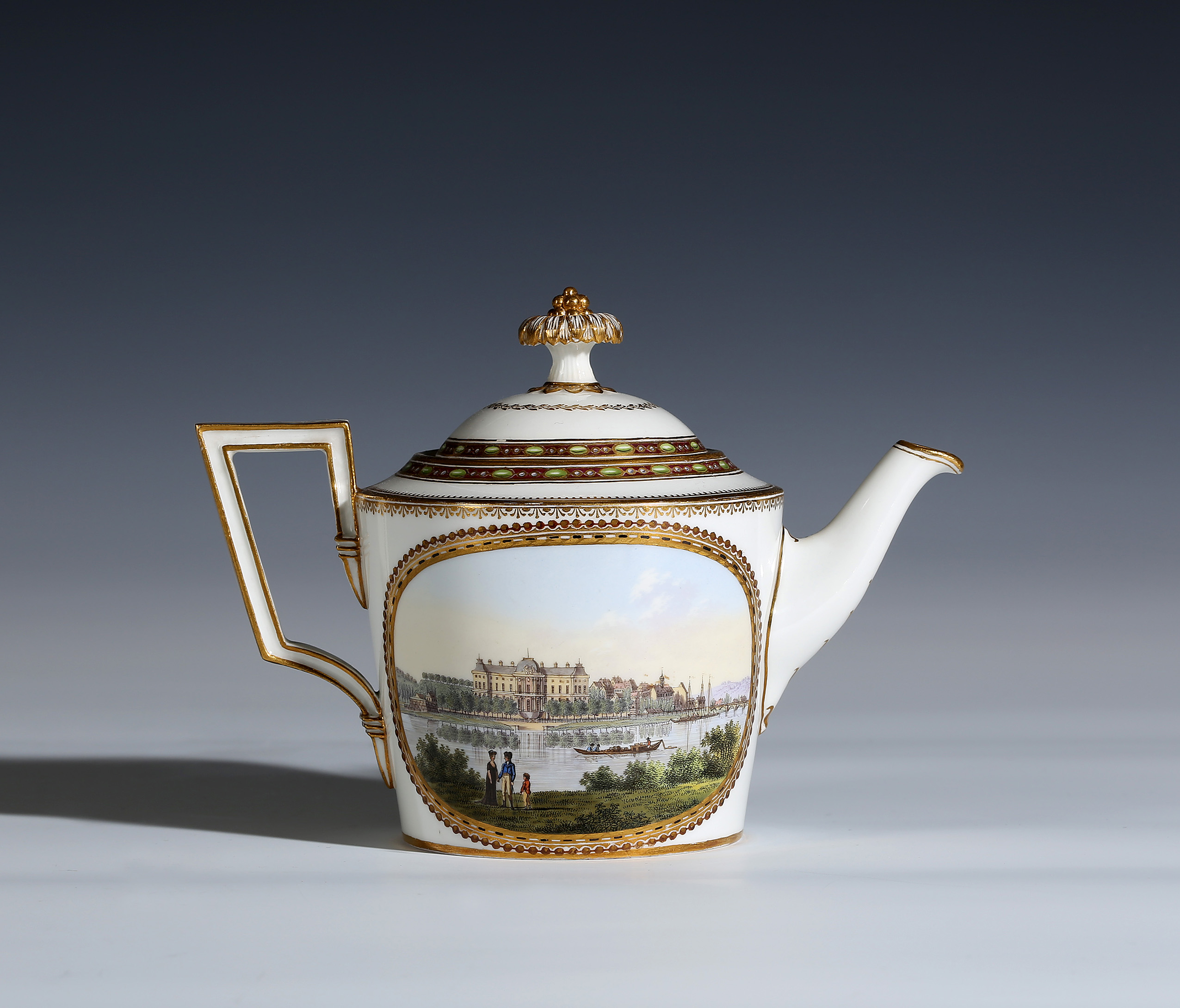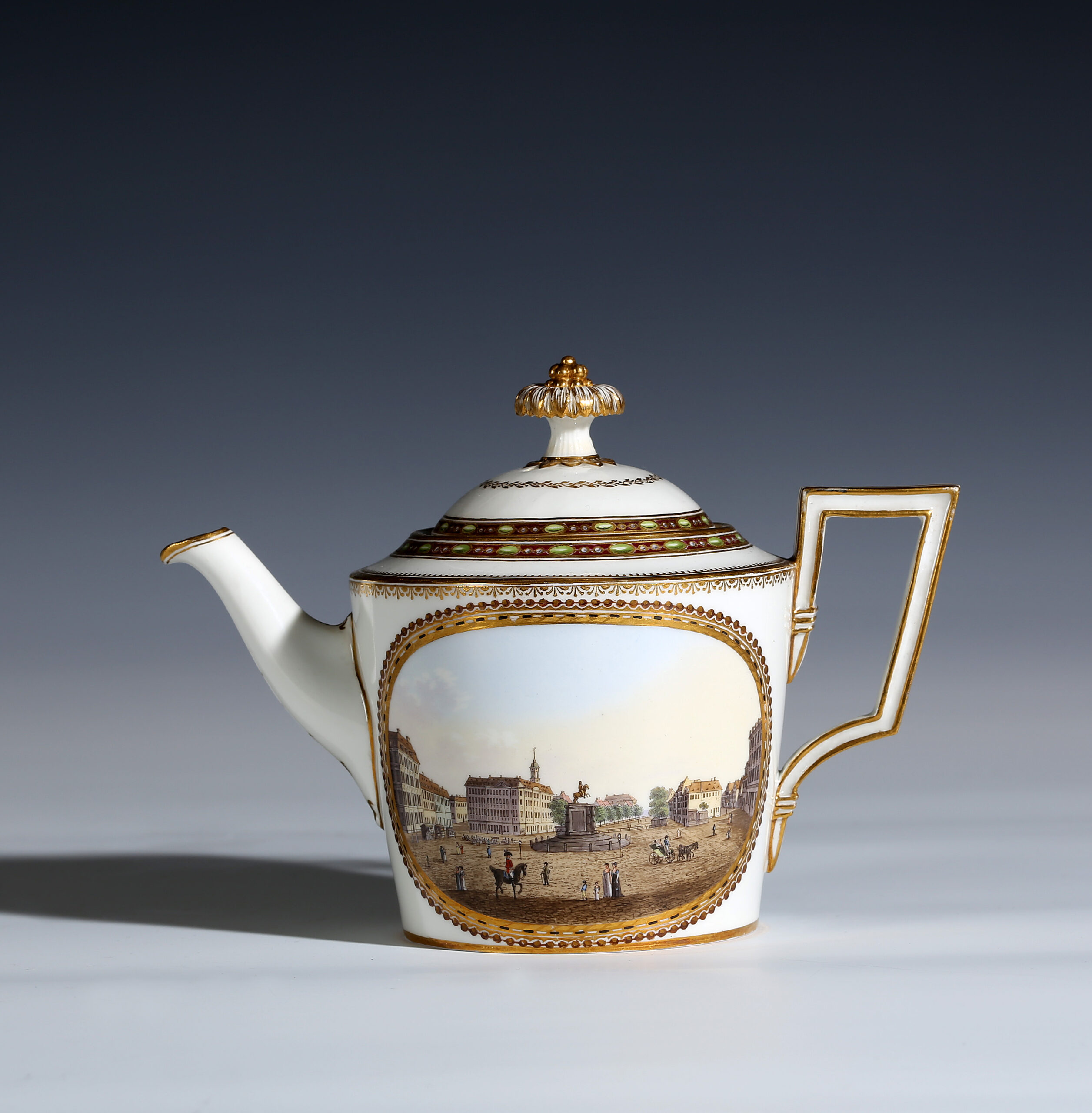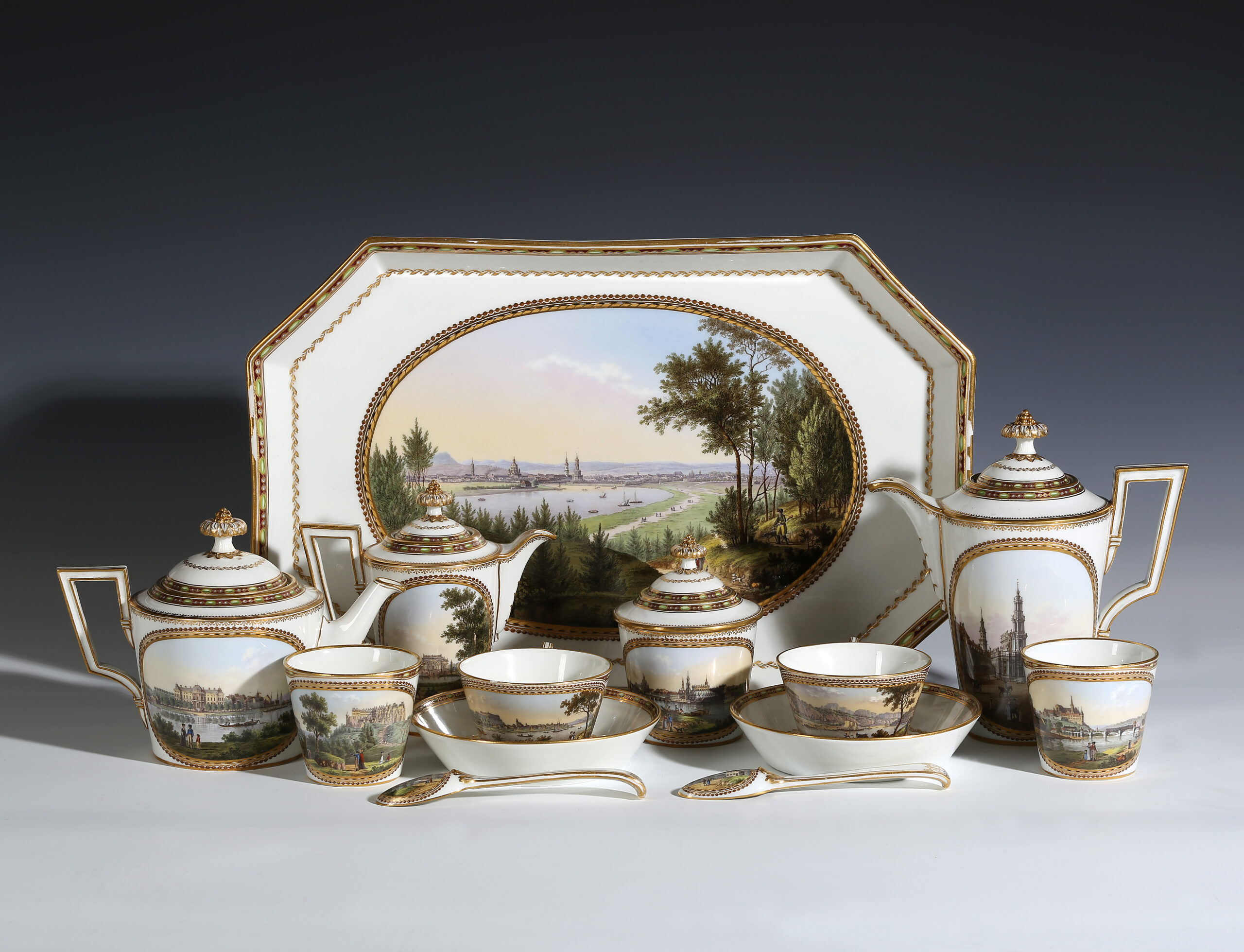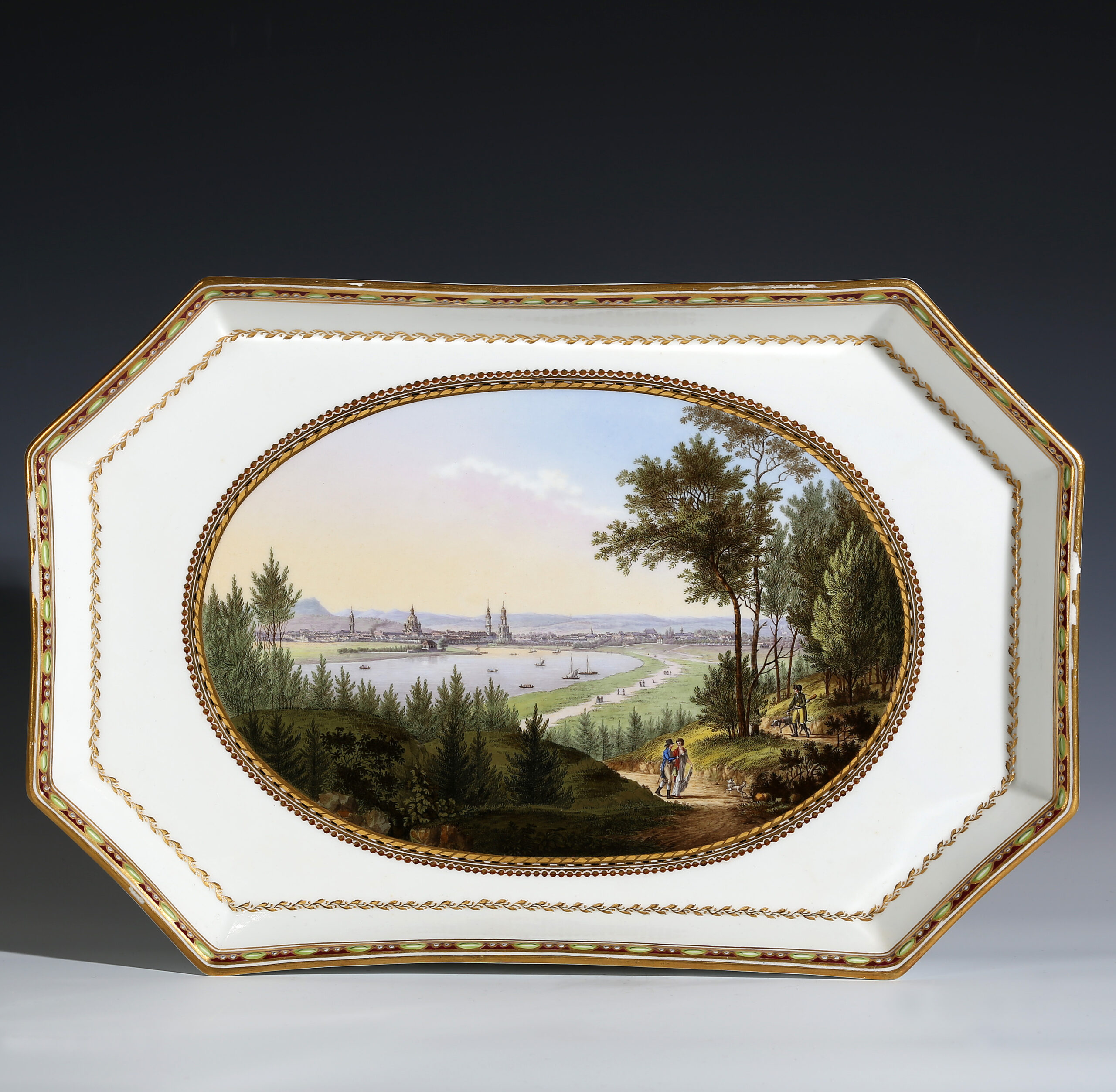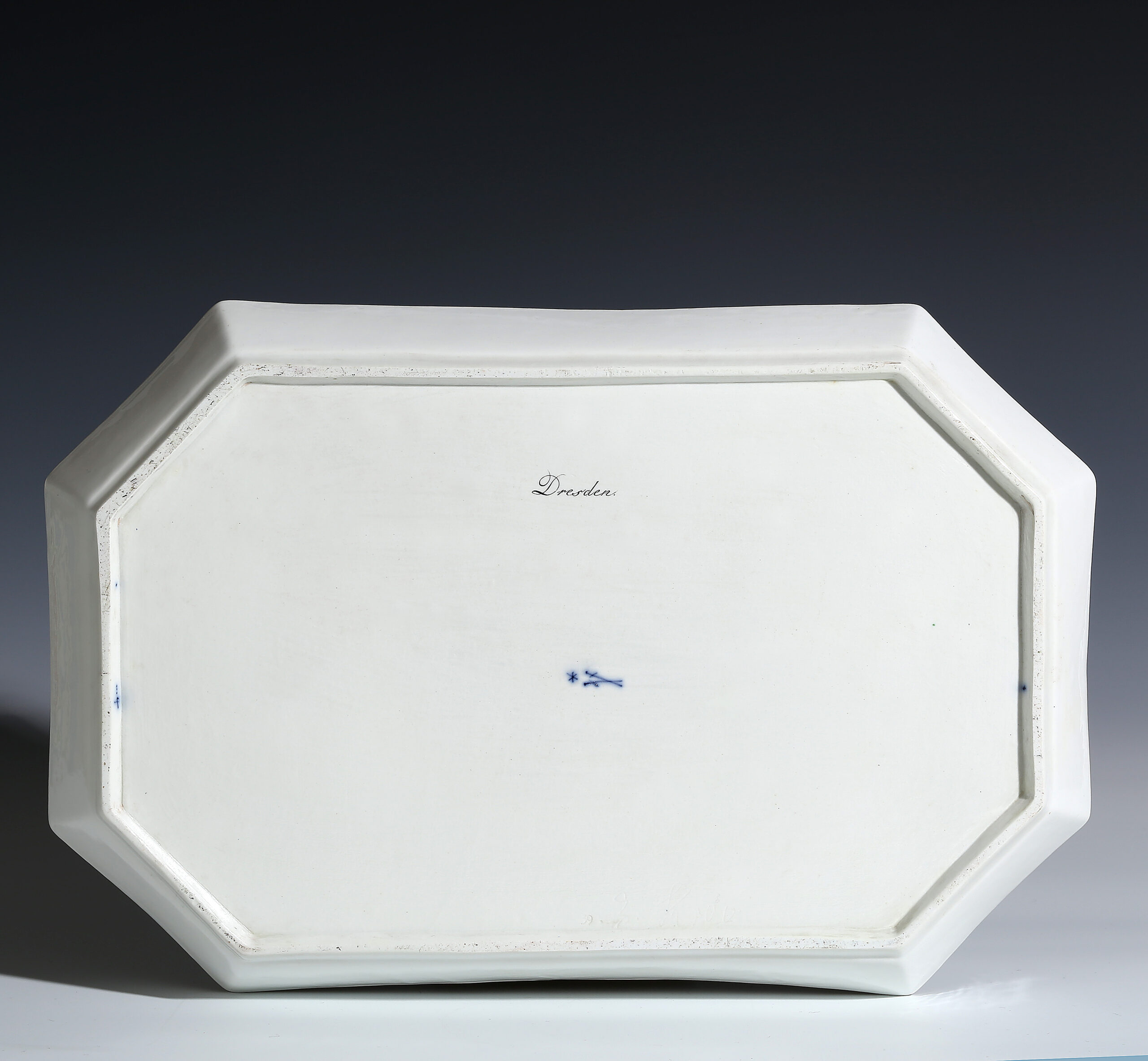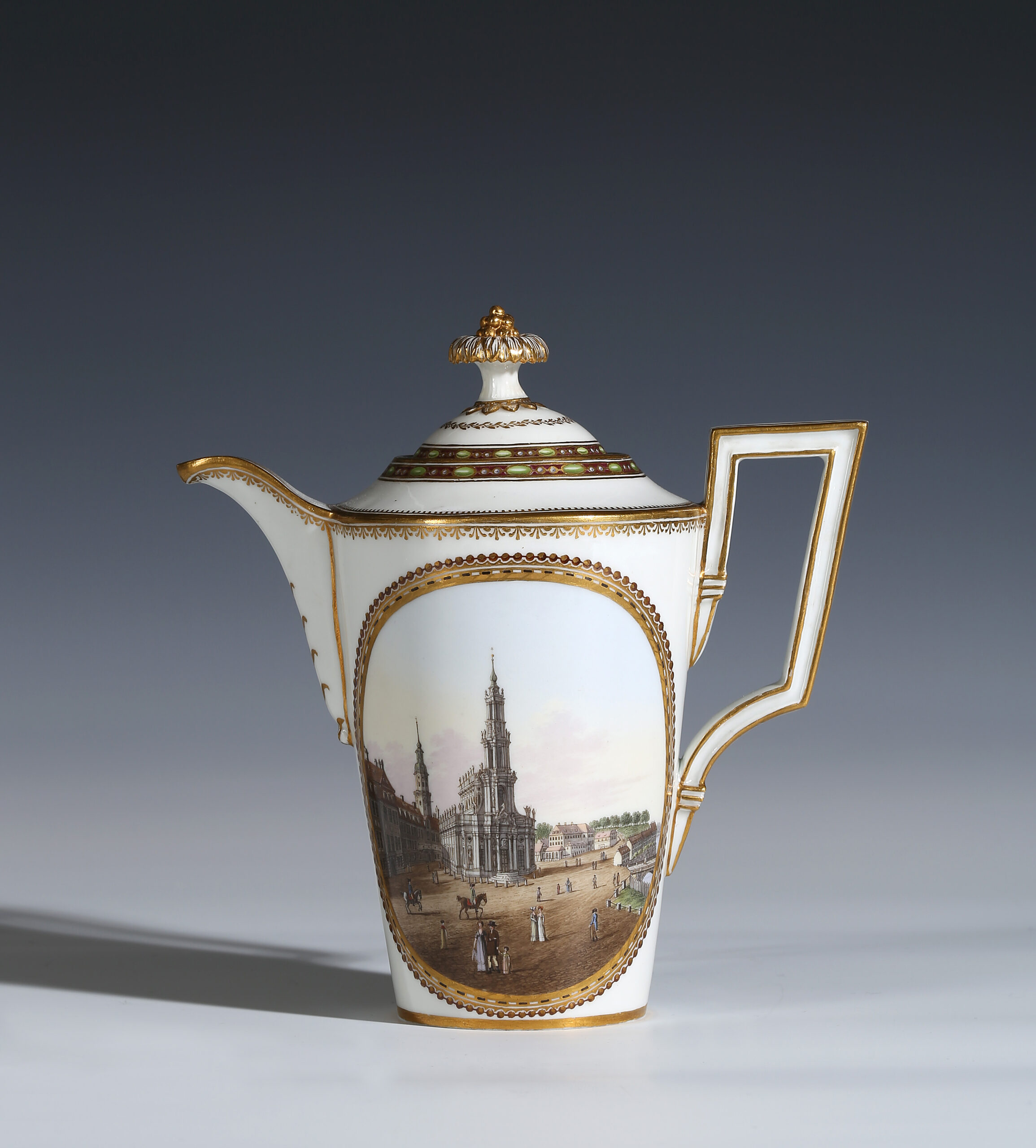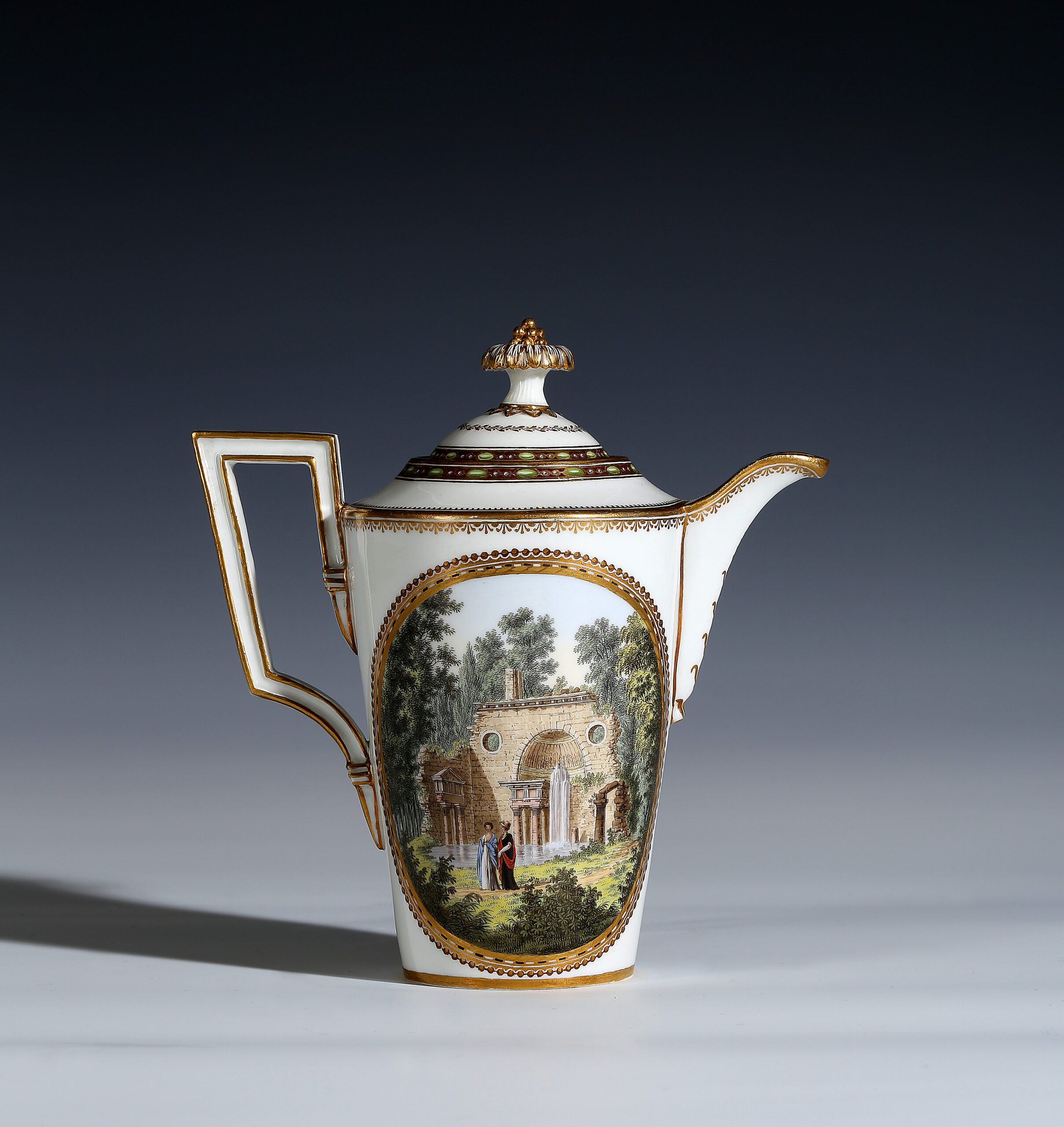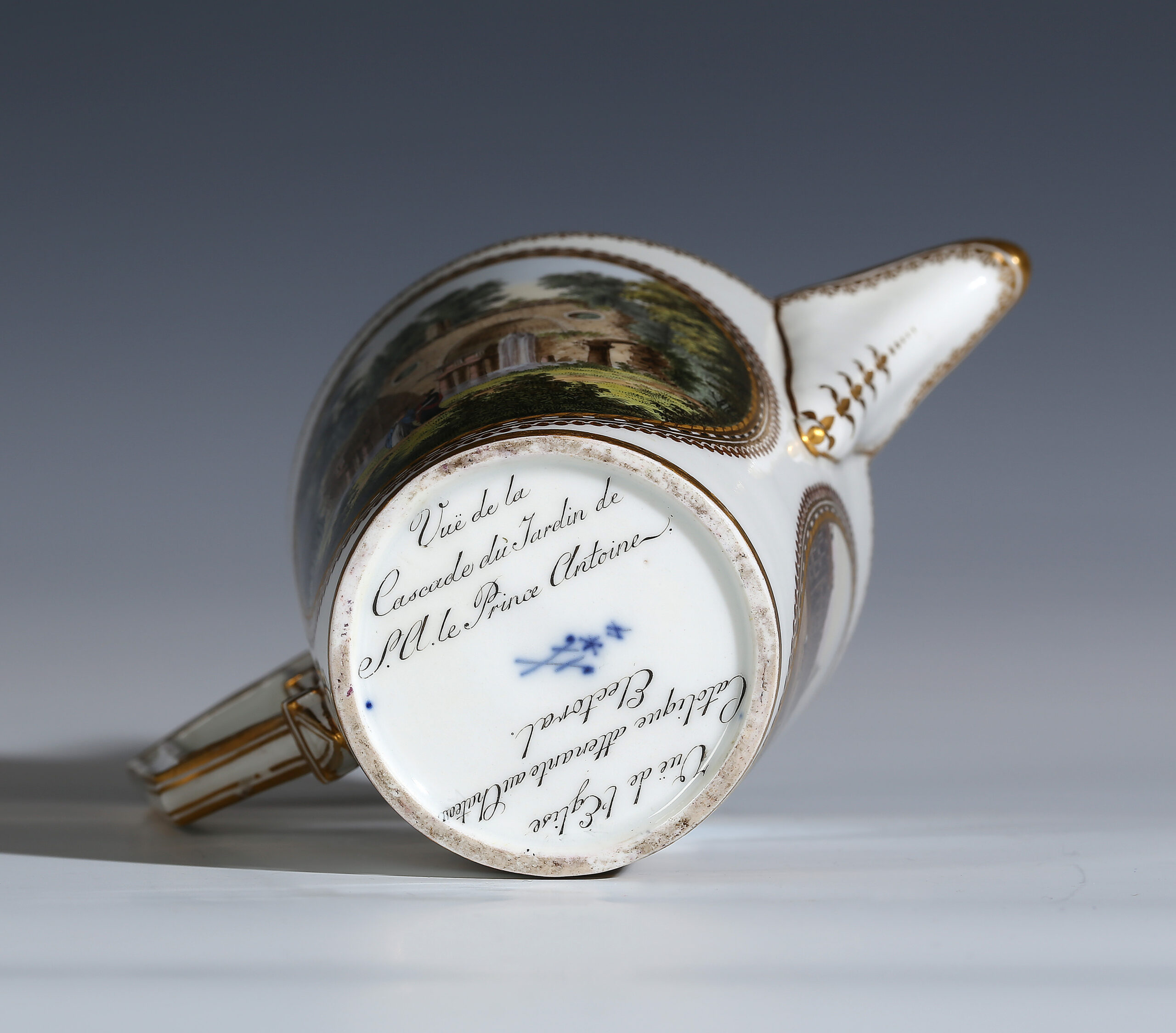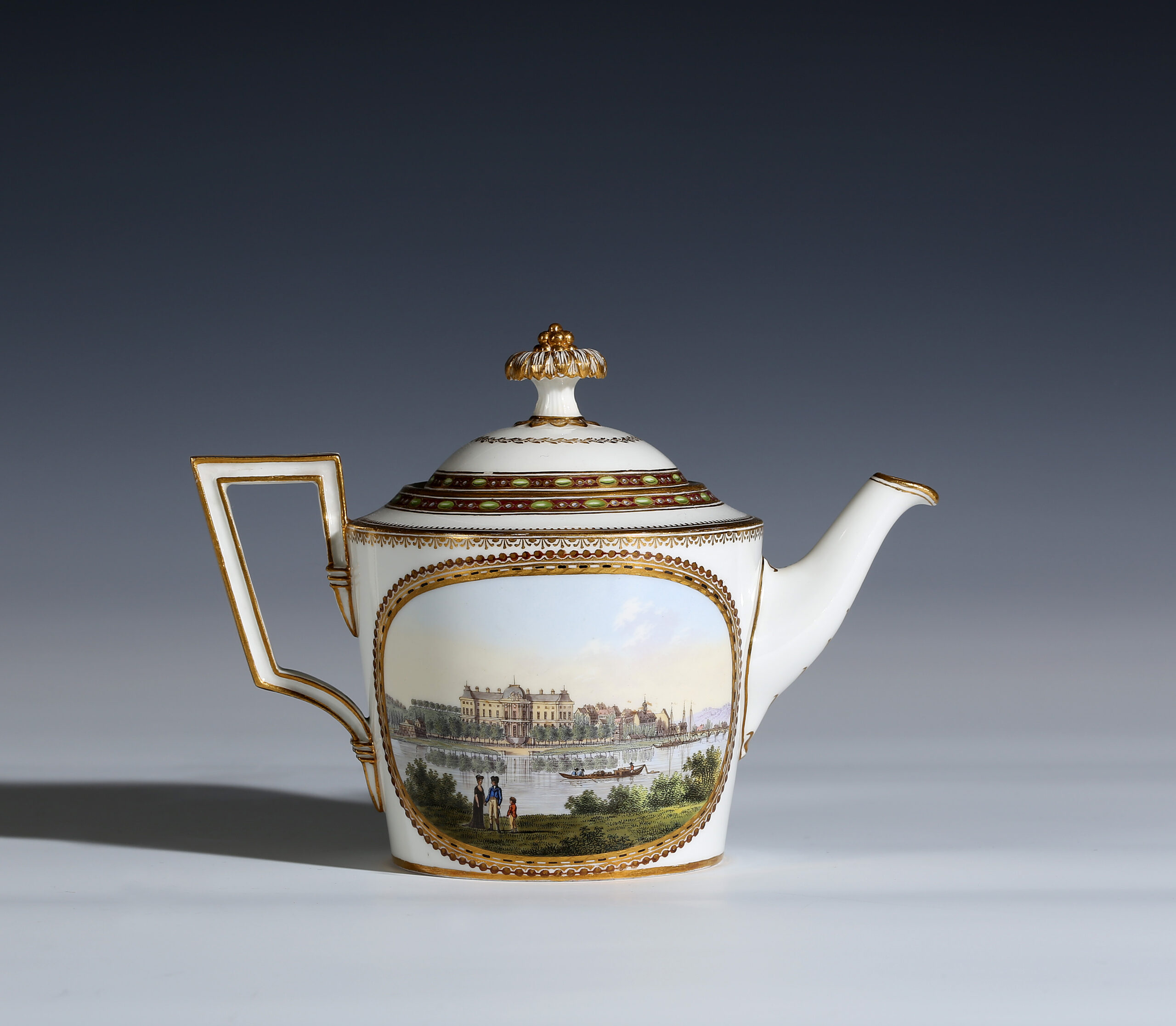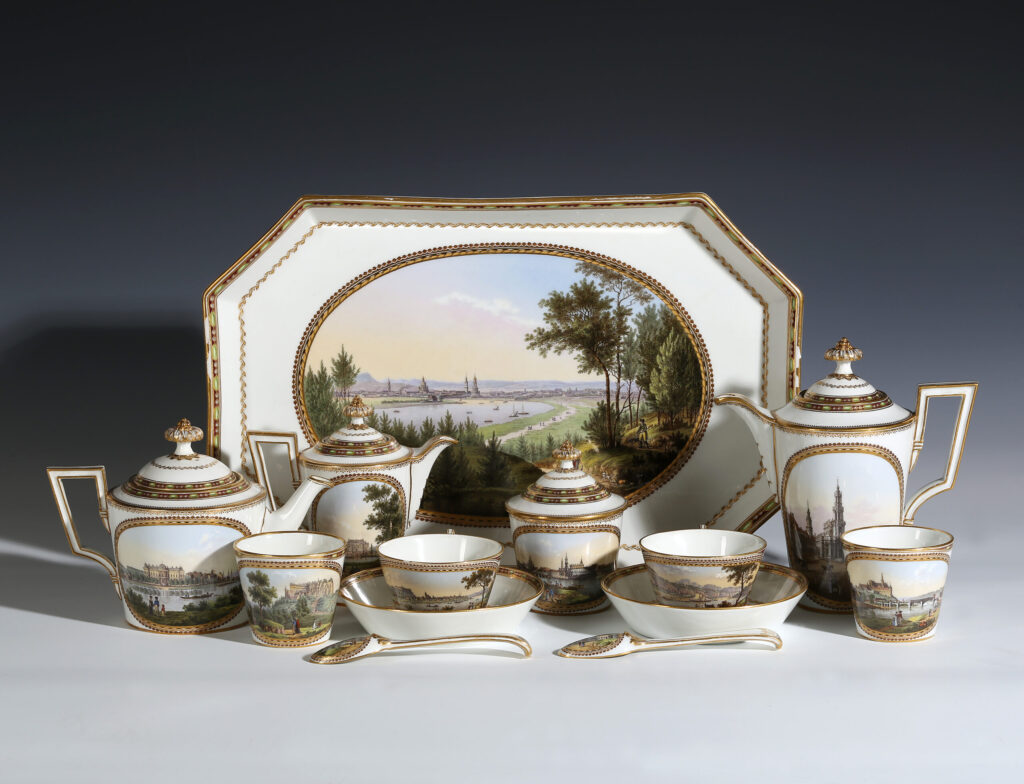
Each piece with crossed swords and star mark and finely inscribed with a description of the view.
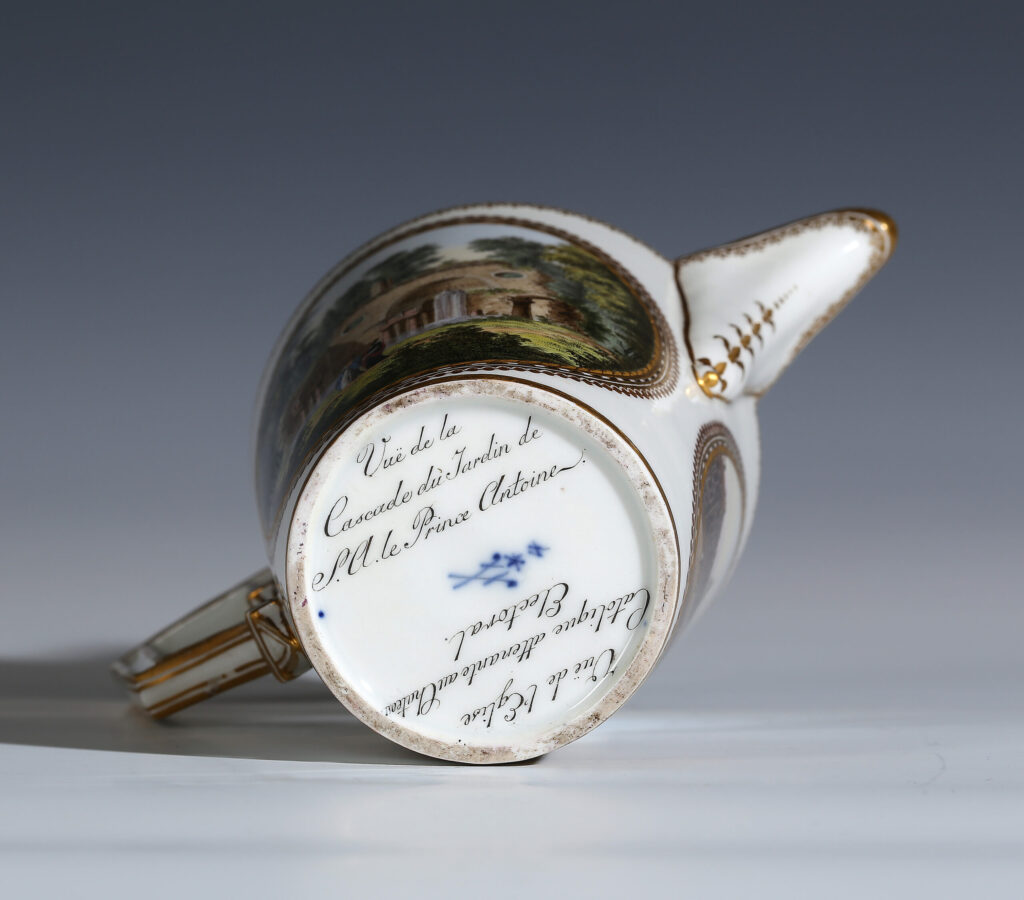
The scenes are mostly well-known vistas of the city familiar today and great palaces around Dresden. The view of the city on the tray is taken from near the Waldschlösschen on the right bank of the Elbe.

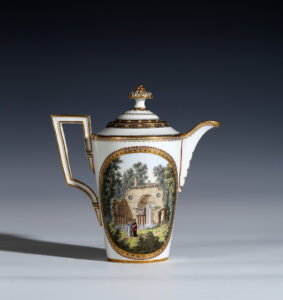
The ‘Vue de la cascade du Jardin S.A. le Prince Antoine’ on the coffeepot no longer exists and was part of the ruined Doric temple in the Prinzenpalais (Sekundgenitur).
The palace of prince Maximilian on the sugar bowl was in the west of the city and was destroyed in 1890.
A comparable service in the Rijksmuseum, Amsterdam, with views of French ports after Claude-Joseph Vernet, is dated to 1800-1804 and the painting attributed to Johann Gottlob Karl Liebezeit (den Blauwen 1999, no 251, p. 357 and Pietsch & Banz 2010, p. 383, Cat. no. 492). A tête à tête with views of Dresden attributed to Carl Gottlob Ehrlich is in Koskovo State Ceramics Museum, near Moscow, illustrated in the Triumph of the Blue Swords, 2010, p.382, Cat. No. 491.
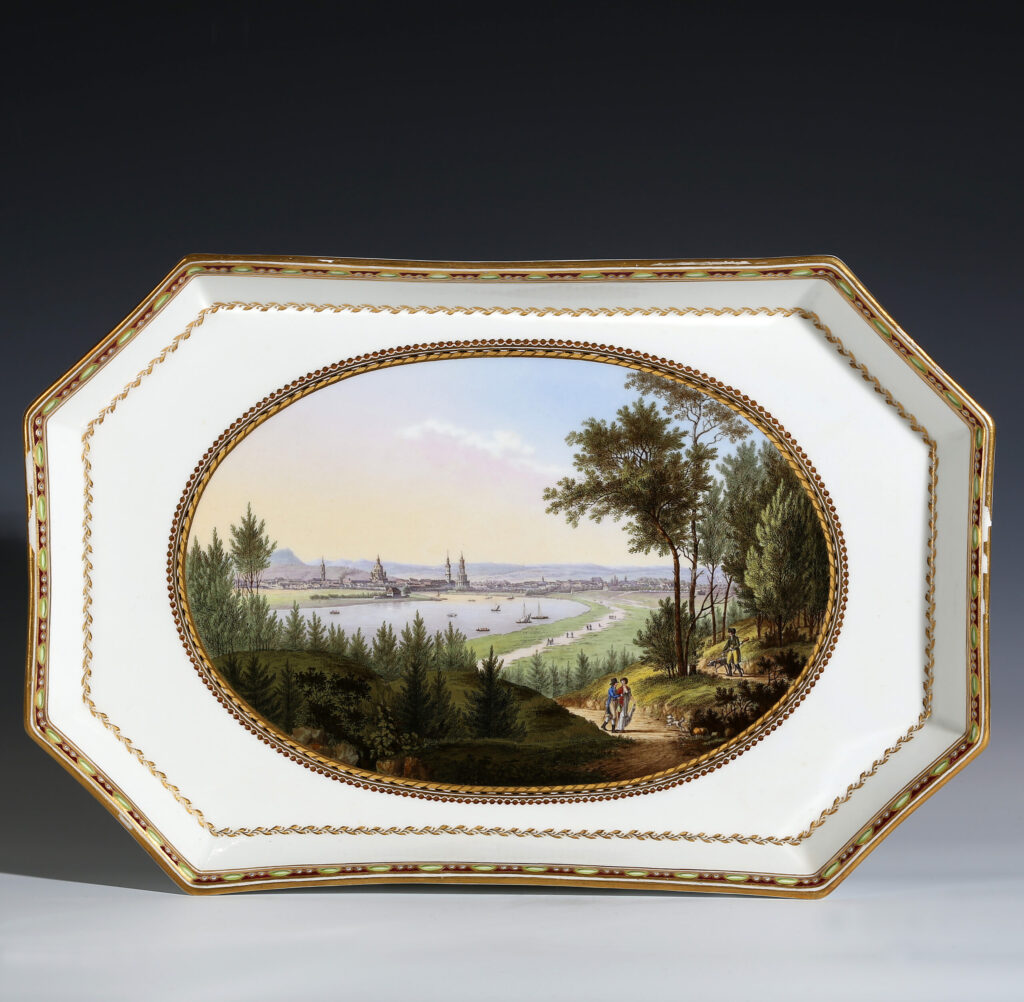
Johann Gottlob Karl Liebezeit was described as the ‘excellent Prospekte painter’. Liebezeit along with Johann Friedrich Nagel were the factories leading topographical painters in the period 1790-1810. They are recorded as having painted views of Dresden, Meissen, the Moritzburg and Pillnitz.
Our service appears to be complete. A coffee cup and teacup sharing a saucer, known as a ‘trio’, is more common in English porcelain.
The service comprises:
Octagonal rectangular tray
‘Dresden’
39.6 cm by 26.4 cm
Coffeepot and cover
‘Vue de la cascade du Jardin S.A. le Prince Antoine.’ and
‘Vue de l‘Eglise Catholique attenante au Chateau Electoral’
17.5 cm high, 17.5cm wide
Teapot and cover
‘Vue de la grande place de la Ville neuve.’ and
‘Vue du Palais de la Bibliotheque de S.A. Electorale, du coté de l’Elbe.’, this is in fact the Japanese Palace which was repurposed as a library in the latter part of the reign of Augustus III.
13.3 cm high, 18.5 cm wide
Milk jug and cover
‘Vue d’une partie de la vieux marché.’ and
‘Vue d’une partie du Grande Jardin.’
13.7 cm high, 14.0 wide
Sugar bowl and cover
‘Vue d’une partie du Jardin de S.A. le Prince Maximilien.’ and
‘Vue de Dresde, du coté de la Ville neuve.’
11 cm high, 8.1 cm diam.
Two coffee cups
‘Meissen.’ and ‘Königstein.’
6.3 cm high
Two tea cups
‘Pirna.’ and ‘Schandau.’
4.9 cm high
Two saucers
‘Pillnitz.’ and ‘Mauritzburg.’
13.4 cm diam.
Two spoons
Unnamed views of a pavilion and a church
14 cm long
We are grateful to Prof. Dr. Marcus Köhler for help in identifying the lesser-known views and to Maureen Cassidy-Geiger for pointing out the change in purpose of the Japanese Palace.
Condition:
Losses to the gilding on the rim of the tray. No restoration.
References:
Den Blauwen 1999
Abraham den Blaauwen, Meissen Porcelain: In the Rijksmuseum, 1999
Pietsch & Banz 2010
Ulrich Pietsch (Ed.), Claudia Banz (Ed.), Triumph of the Blue Swords: Meissen Porcelain for Aristocracy and Bourgeoisie, (2010)
Sold

